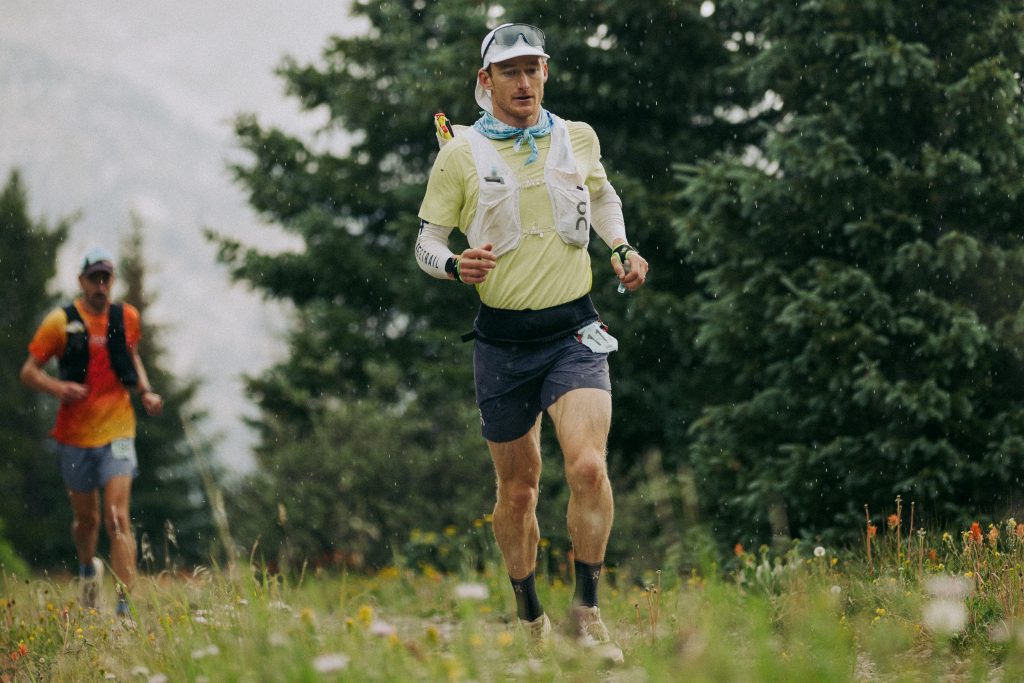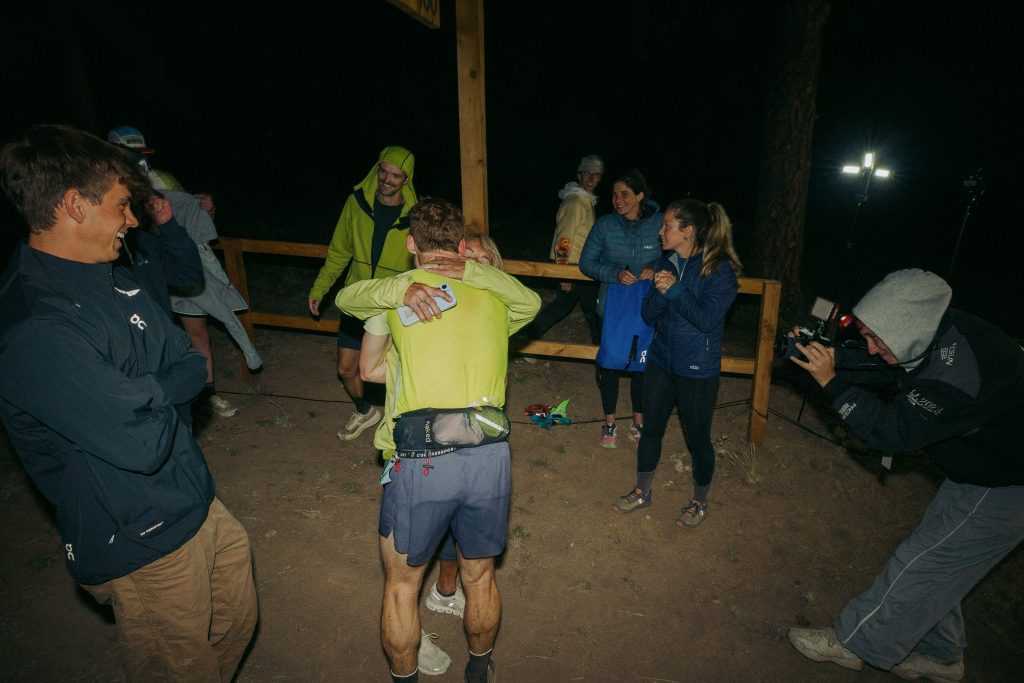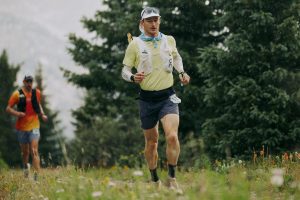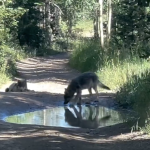‘Finding patience in the practice’: Carbondale runner shatters 100-mile high-alpine race record

Courtesy/Oliver Sutro
Jeff Colt’s glass-half-full outlook on life is the difference maker when the starting gun fires on race day.
The Carbondale runner has stacked a staggering seven 100-mile races and over 35 ultra-marathons under his belt, though he said none of which went as seamless as the 2025 High Lonesome 100 race, hosted in the Sawatch Mountains in late July.
“I felt quite good throughout,” Colt said. “‘Patience is the practice.’ I kept telling myself not to worry where I was, or how fast I was running, I just focused on running on feel and continuing to be patient.”
Invited to participate in the High Lonesome 100 through an “elite entry” invite from the race’s director, Colt ended up smashing the previous record of 19 hours, 42 minutes, by nearly a full hour, finishing the 100 mile race in 18 hours, 52 minutes on the dot.
“It’s a weird feeling when everything goes according to plan,” Colt laughed. “It was honestly the best race I’ve ever had.”
Colt’s crew chief and close personal friend Drew Petersen was slightly struck with the way that Colt was able to hold composure throughout the ruthless course.
“Winning High Lonesome is one thing, setting a blisteringly fast course record is another, but doing it in the fashion that Jeff does — holding poise, grace, joy, sportsmanship, and this positive aura that he possesses in his day-to-day life through the race is really inspirational,” Petersen said.
He said what makes Colt special is his ability to savor the moment while staying completely locked in.
“He runs with the love and joy for his community and loved ones. When he is out there, he isn’t just focused on his time splits and what he’s supposed to eat. He is also actively thinking and appreciating his love for the sport and for all the people in his life that helped him reach that point.”
According to Petersen, the most evident trait of Colt’s character didn’t come within the near 20 hours of consecutive running, rather minutes after setting a new race record.
“Right after finishing and giving all of us very gracious thanks, he asked if we could stay and wait for the second place finisher so he could cheer them across the finish line and give them a hug. It was just very telling of the kind of person and competitor that Jeff is.”

Colt explained that repeating his “find patience in the practice” mantra continued to help him stay grounded and push through a vicious course that traverses both the Continental Divide and classic Colorado trails, demanding runners climb six peaks over 12,000 feet throughout the race.
The High Lonesome 100’s average elevation is 10,426 feet, and the trail doesn’t dip below the 10,000 foot mark from miles 10 to 70. In total, racers climb 23,300 feet through the 100-mile loop that begins and ends at the base of Mount Princeton, stretches north to Cottonwood Pass, and touches Monarch Ski Resort at its southern peak.
With 16 aid stations situated along the trails and individual crews waiting for each racer at each station, services are available for runners throughout the extreme race. Through the 18 hours, 52 minutes of timed running on the trail, Colt spent a total of 22 minutes at the combined aid stations.
“So much of the race takes place above 10,000 feet, and I didn’t want to push myself too hard too early while I was still at altitude. There are big sections that are at or above 12,000 feet and it’s so much harder on the body (to run that high), so I kept repeating ‘Patience is the practice.'”
Colt said that after the 70 mile mark, when the air became a little thicker, he still felt fresh and was able to dig a little deeper.
“Once I came off the altitude terrain and dropped down to around eight or nine thousand feet, the deeper I was able to push. It sounds a little weird to hear myself say, but the deeper I dug, and the harder I tried, the better I continued to feel. After however many races and long distance runs I’ve done, I can honestly say that has never been the case.”
Petersen said that Colt’s demeanor changed when he stopped at the “Blanks Cabin” aid station.
“He was calm, cool and collected throughout the entire day, which was exactly what he needed to do to succeed,” Petersen said. “But when he came into the mile 85 aid station, it was the first time his demeanor changed. He spent less than a minute in aid, which is ridiculous at mile 85, and said ‘We’ve got three hours to go 15 miles,’ which was the first time he voiced that he was trying to go sub 19 hours. That was the plan, but also something we don’t really say out loud. It was really cool to see him be so calm but laser focused at the same time.”
Colt, who has been running competitively since he was 7 years old and found his love for trail running deep in the Appalachian Mountains, equated the peaks and valleys of extreme distance endurance runs to the ups and downs of life.
“It’s all about perspective,” he started. “I’m not thinking at mile 25 that I still have 75 miles left, I think that would be pretty discouraging. If you’re told to work towards year 100, that’s a pretty absurd task to comprehend. It’s really similar with a race, 100 miles seems absurd, but if you think ‘I’m on mile 25, I feel good right now, I just have to get to the aid station at mile 31, and then go from there.'”
Petersen, who is self-proclaimed “half the runner” of Colt, said he draws inspiration from the way Colt carries himself on and off the course.
“He helps me learn how to live. During the weekend of July 4, we did a training weekend on the course. It was really magical to get to see how beautiful the course was, and see his excitement for the race. Getting to see him in those moments and having the opportunity to help him chase his goals is really special.”
For Colt, a New Hampshire native and long-distance running veteran, but near-decade Carbondale resident, racing (and eventually winning) the High Lonesome 100 was special because of the fact that it took place on the Western Slope.
“There aren’t many 100 mile races around here, and for me, I feel at home when I’m in the Elk Mountains. So High Lonesome, which blends into the Elk Mountains, and Taylor Reservoir, Independence Pass, was an obvious yes. It’s just surreal.”
Being able to run professionally for Colt has been a dream of the New England native since he was tending to high-altitude cabins in the Appalachian Mountains, and keeping the childlike mentality about the sport keeps him coming back every single day.
“Running professionally is an actualization of all my dreams,” he said. “It only continues to fuel the fire for me to approach competition seriously, but with a lightness that this is still the activity I love and it’s my expression of joy.”

Support Local Journalism

Support Local Journalism
Readers around Glenwood Springs and Garfield County make the Post Independent’s work possible. Your financial contribution supports our efforts to deliver quality, locally relevant journalism.
Now more than ever, your support is critical to help us keep our community informed about the evolving coronavirus pandemic and the impact it is having locally. Every contribution, however large or small, will make a difference.
Each donation will be used exclusively for the development and creation of increased news coverage.









